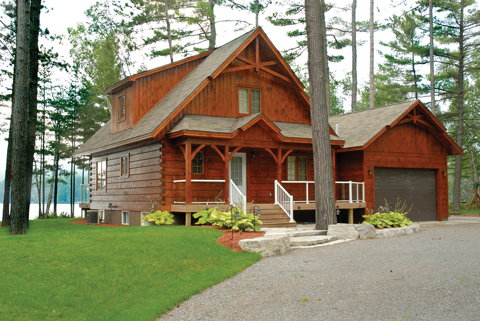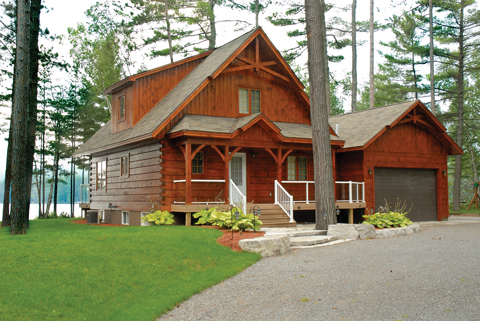When you first build your log home, you’re thinking about how it will fulfill your family’s current needs. After years of living in the home, as your children and grandchildren grow up, you begin to build a history of cherished memories around it. Then, you may begin to think of your home differently. It’s not just as a place to sleep and eat anymore, but much more. It has become a building block for your children and their children’s future. It’s the place where family gathers for holidays and vacations. Your log home becomes entwined in your family’s history. “Log homes are like family heirlooms,” says Vincent Palmere, product manager of Perma-Chink Systems, Inc., in Knoxville, Tennessee. “They need to be cherished and cared for so they can be passed along from generation to generation.” Proper maintenance is essential to help ensure that your log home will be around for years of enjoyment.
Whether you have been living in your log home for years or if you have recently moved in, it is wise to develop a regular maintenance schedule to examine your logs. The logs in your home will continue to move and possibly compromise your log home’s sealant system, which prevents water from entering the wood. “A visual inspection of your sealant system a couple of times a year should help you determine where repairs need to be made,” says Vincent. “An even better method is to have an energy audit performed on your home.” With the use of a blower and infrared cameras, auditors can detect where any air infiltration is occurring. Before hiring a professional auditor, contact your utility company to see if they offer free or discounted energy audits. If not, make sure that the home-energy professional is a certified Home Energy Rater. To find a certified professional in your area, visit energystar.gov. Once you have the report, you will know where to fill in the gaps. Use a sealant formulated specifically for log homes. Do not use a basic caulk, which hardens over time. It will not hold up to the movement of the logs the way a log home sealant will.

Discovery Dream Homes
For a log home, the main reason to fill in any gaps is not necessarily because of the air coming in. Although air leaks can compromise the energy efficiency of your home, they are not as damaging as the water that they can let into your walls. Remember: Water is a big enemy for a log home. According to Vincent, decay from water is responsible for a large percentage of all log damage. “Many people get overly concerned about beetles and other bug infestations, but other than termites, these types of insects are more of a nuisance and rarely do any structural damage,” Vincent says. “Decay, on the other hand, is responsible for 99 percent of all log home damage. Plus it’s costly to repair. Eliminate the water and you eliminate 99 percent of all log home repair costs.” A moisture meter is a good tool to own and use. The rule of thumb is to keep log moisture content below 20 percent.
If your home does experience bug infestation, consult with a local exterminator. Pests like carpenter ants, termites, post powder beetles, carpenter bees, cluster flies, and ladybugs can bore holes into your logs where water can collect. “Any holes that have been bored into the logs by insects should be cleaned, plugged with steel wool, caulked, and sealed with a stain to keep water out,” says Marleen Gagnon of Alta Log Homes in Halcottsville, New York.
To help maintain your log finish and log integrity, keep the exterior clean. “A twice yearly walk-around inspection of your home, once in the spring and once in the fall, will ensure small maintenance issues will not become a costly repair,” says Marleen. Regularly wash off any mold or mildew found on the home. Use a wood cleaner developed specifically for log homes to remove mold and mildew, as well as dirt, pollen, and bird droppings. Once your walls are clean and dry, Vincent recommends inspecting the log finish for any fading or dulling of the surface. “The objective is to catch and touch up any surface weathering before the wood has started to gray due to UV oxidation,” Vincent says. “And don’t forget, besides making your home attractive, the function of a finish is to keep your wood dry and prevent decay.”
By taking the time to regularly maintain your log home, you are establishing a lasting gift. It ensures your cherished memories will be passed down through your family in a log house that you set up and preserved.

